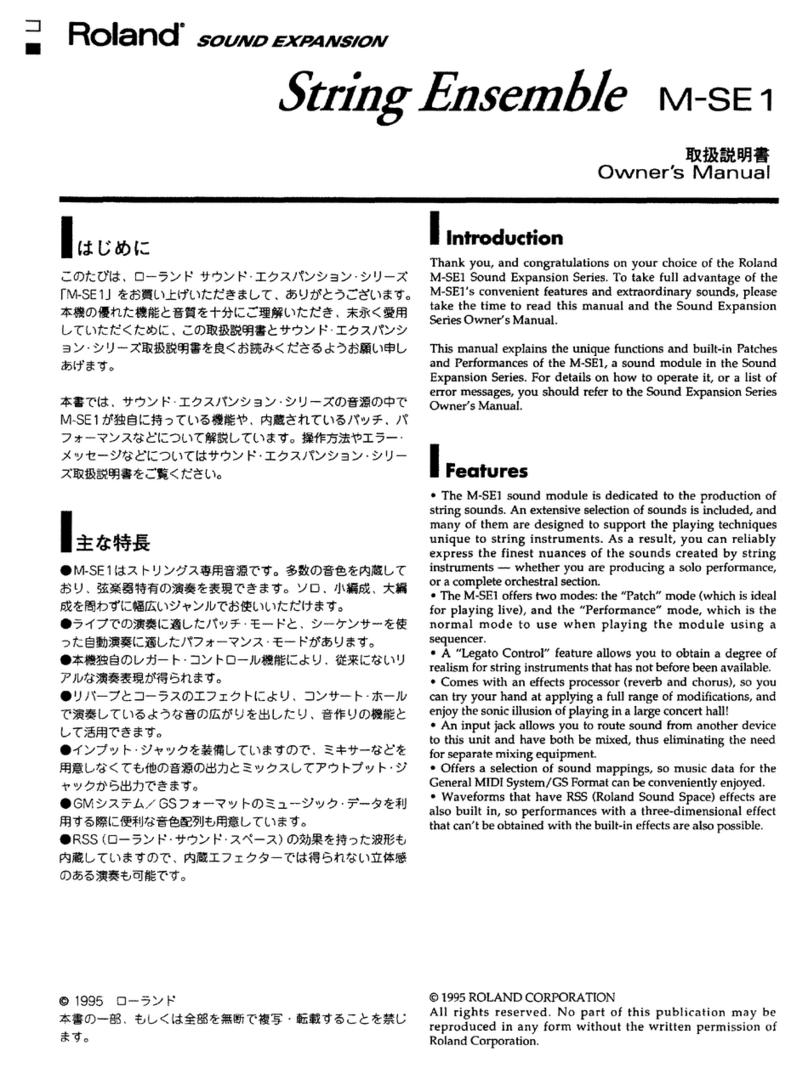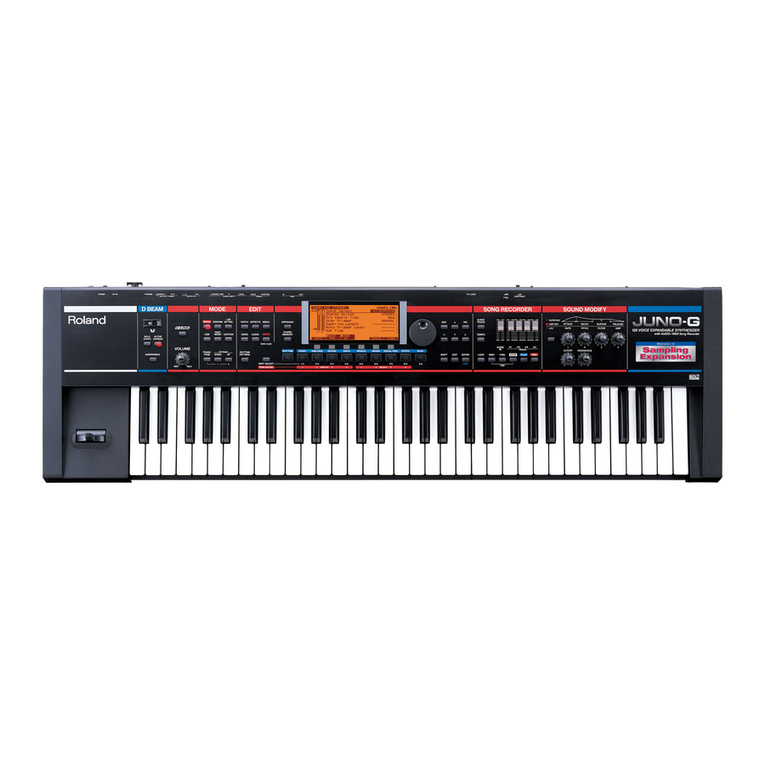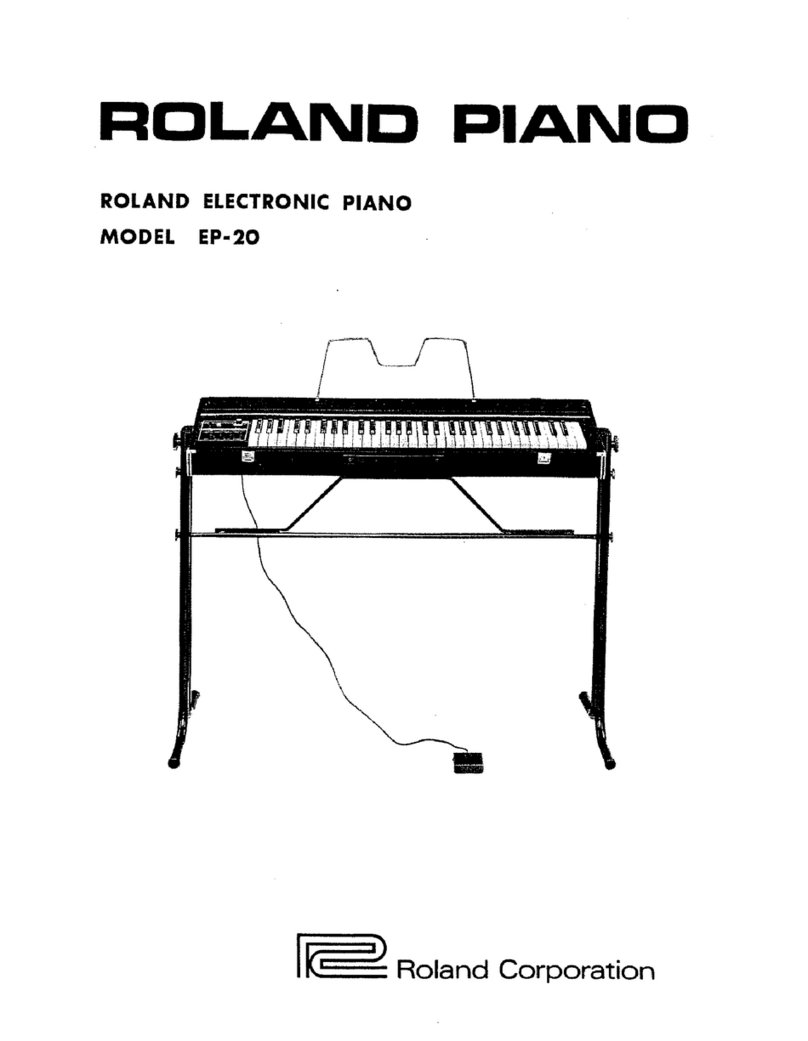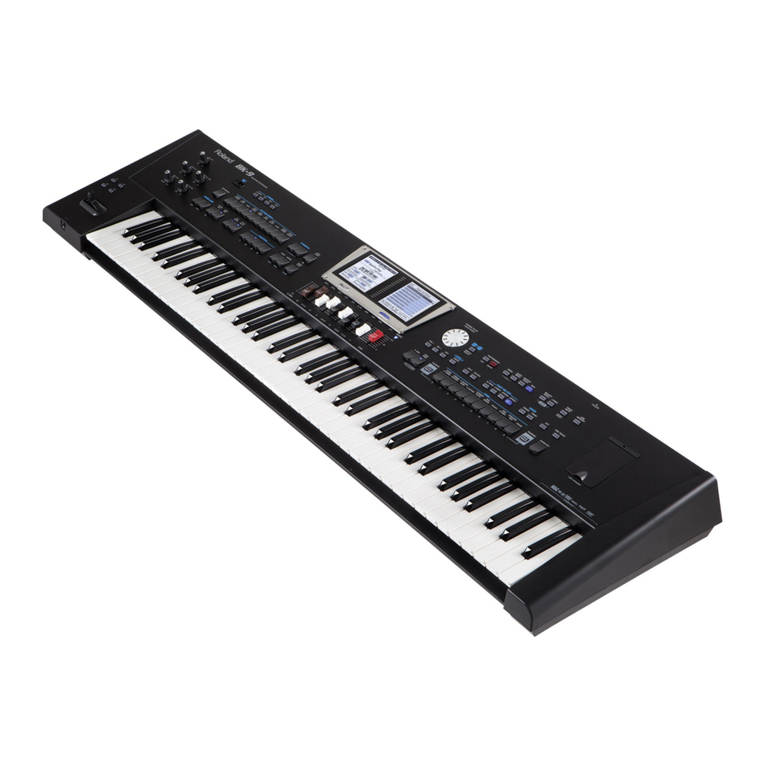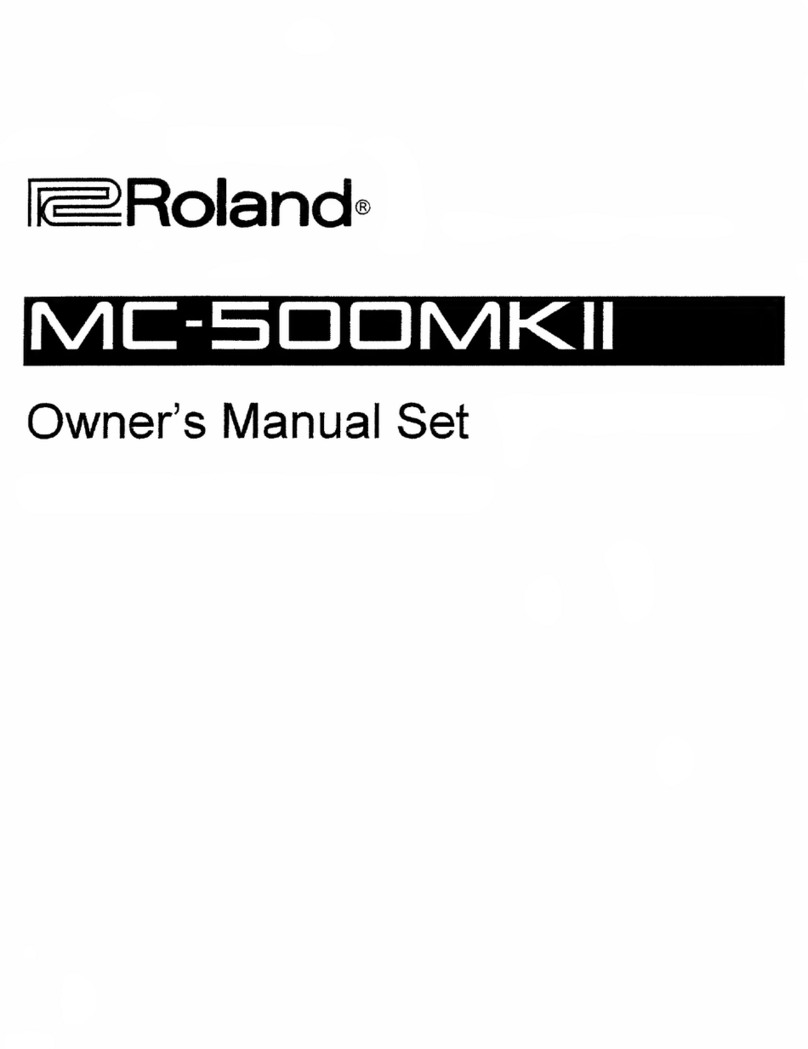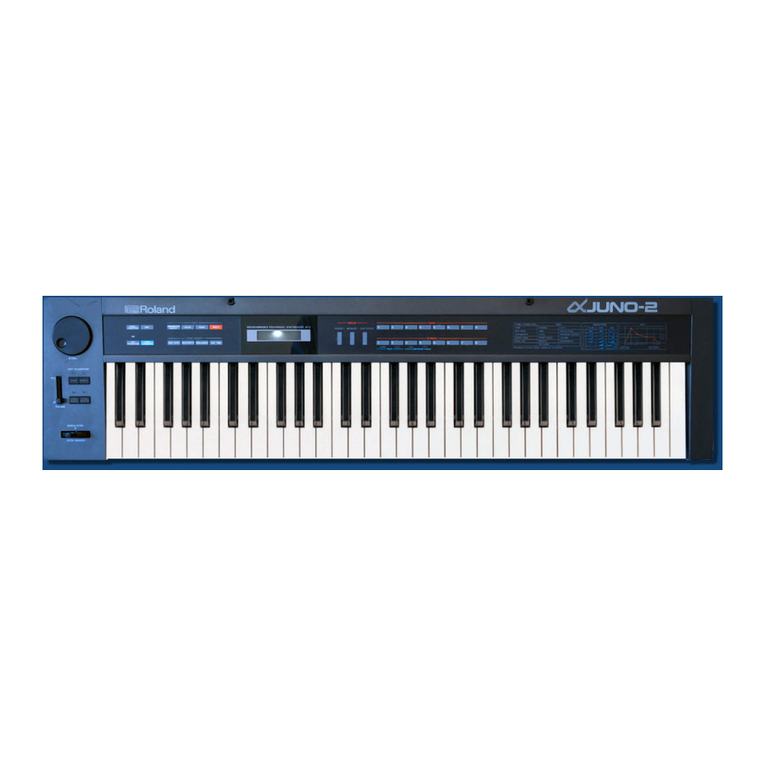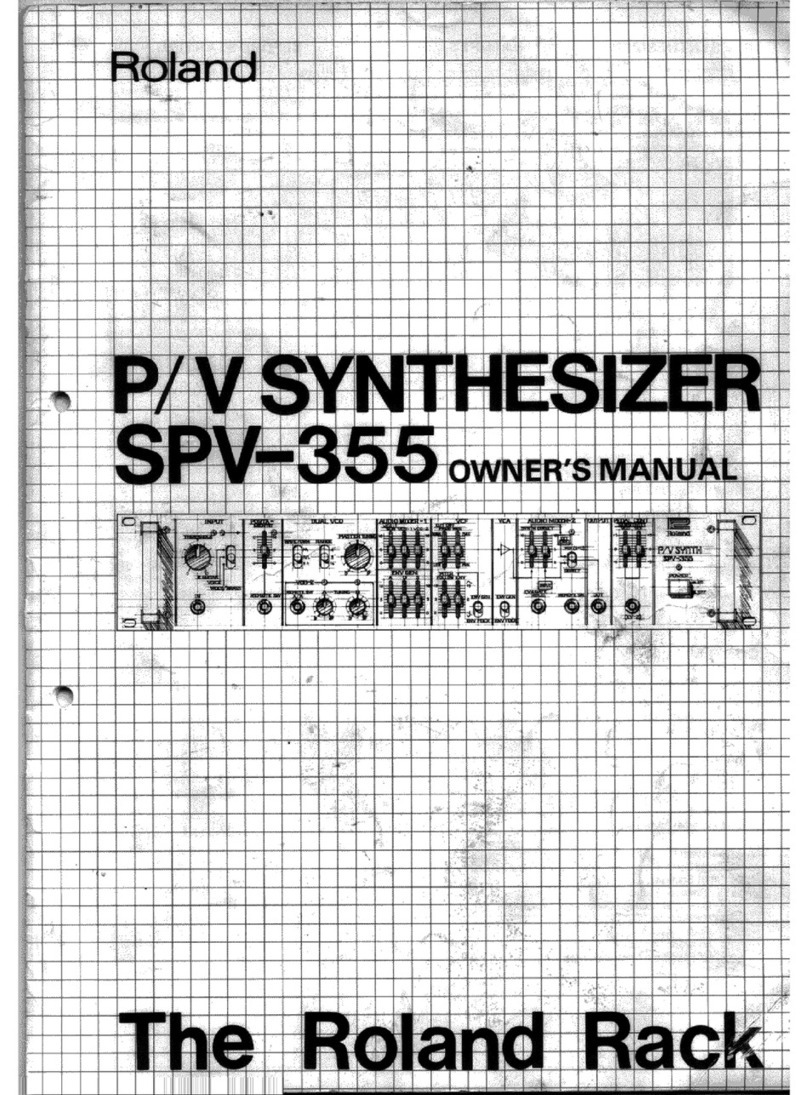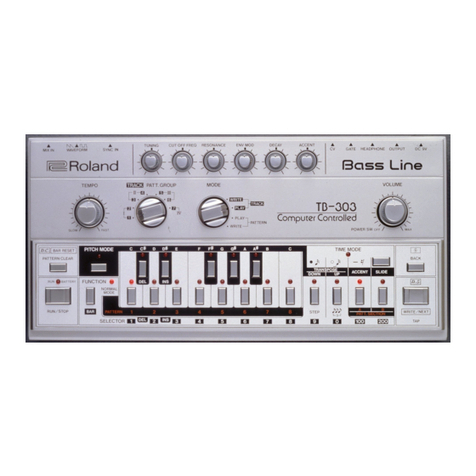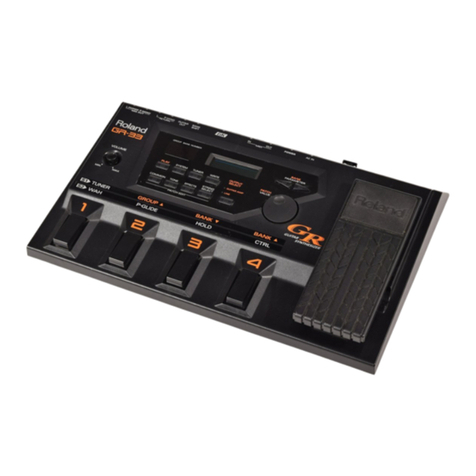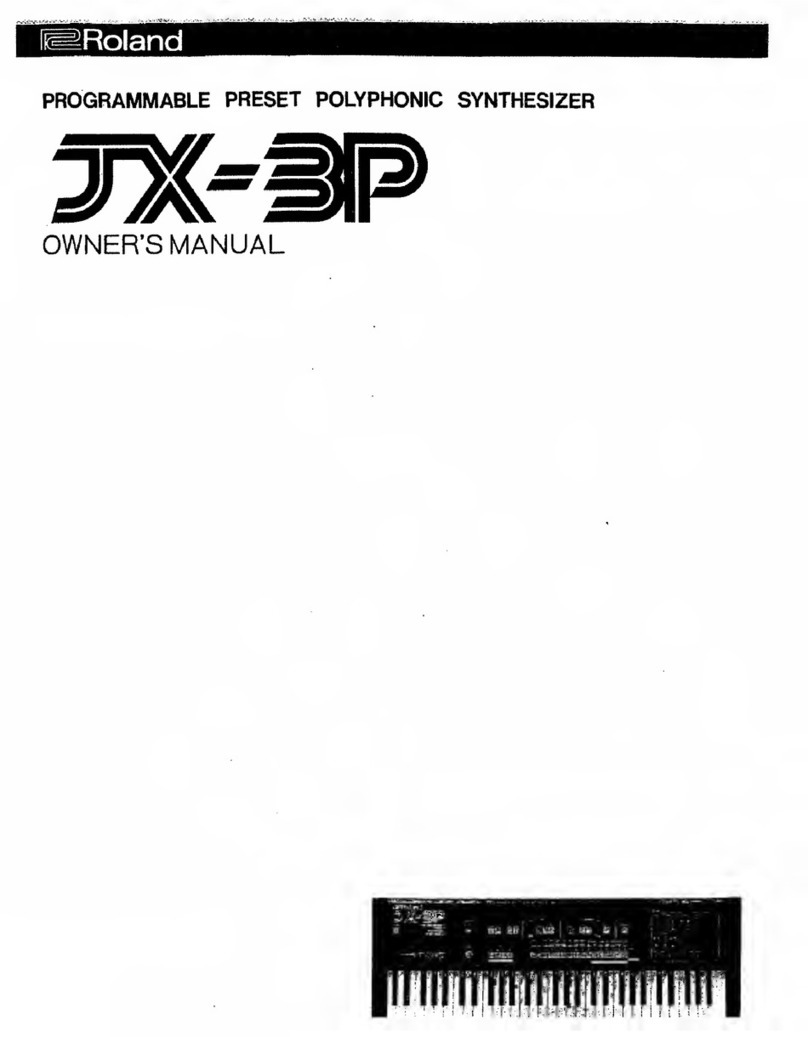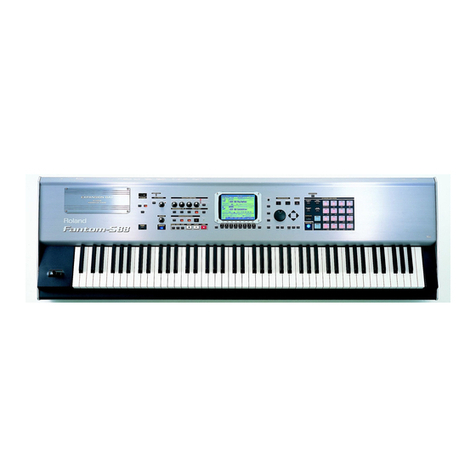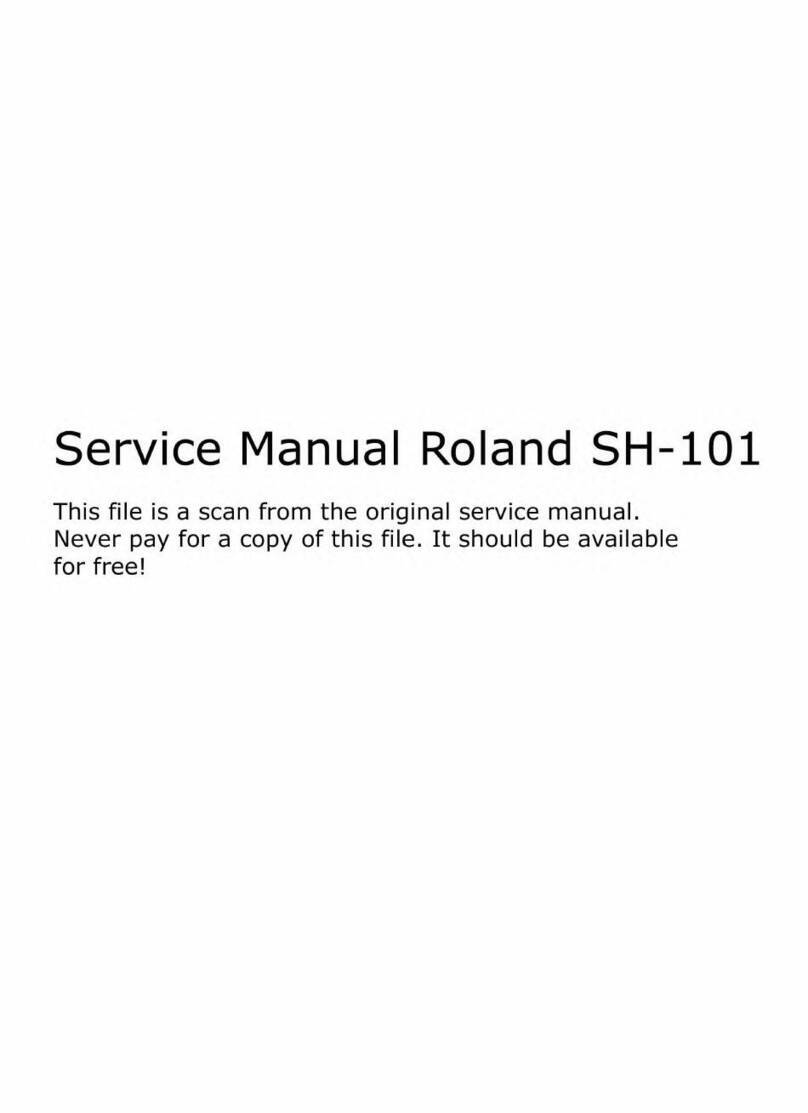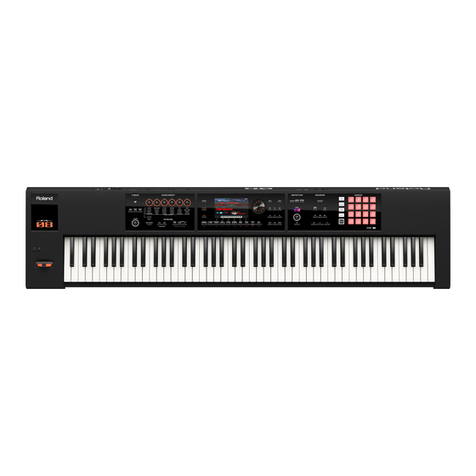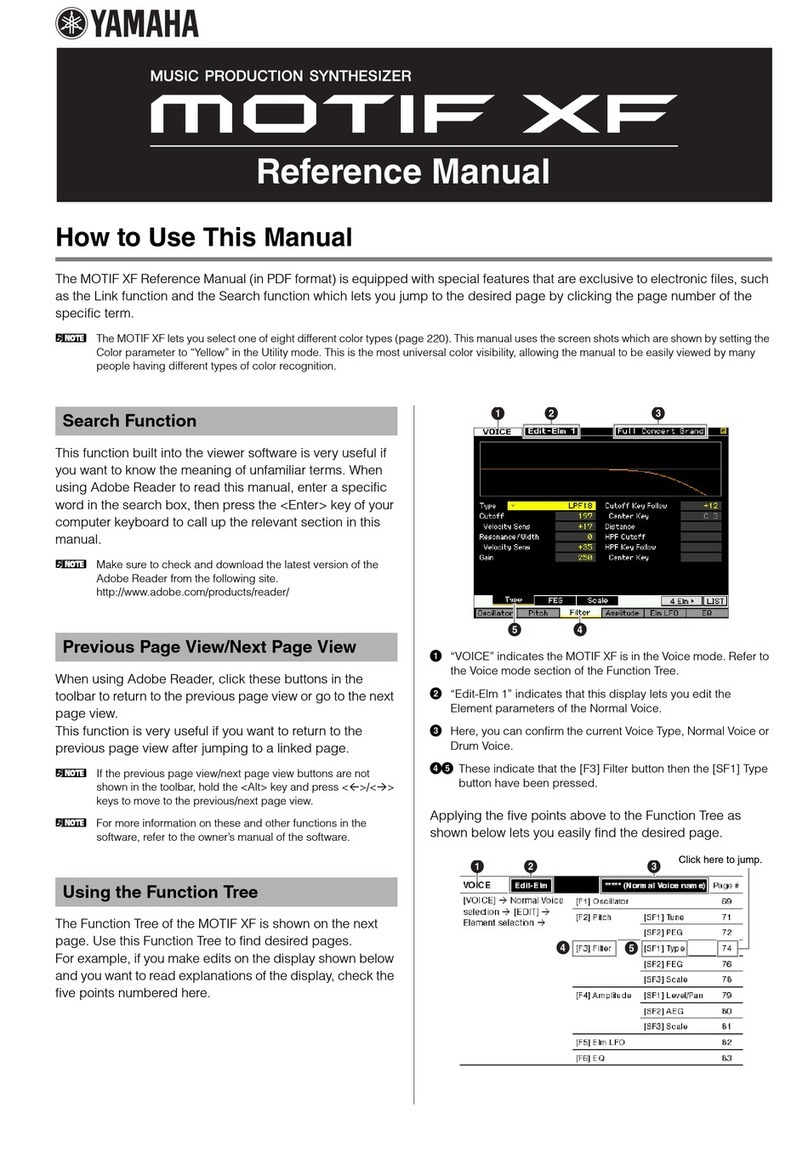TBS209 ©2004 Roland Corporation U.S.
www.RolandUS.com
Faxback #20242 Page 1
Welcome
Congratulations on your purchase of the Roland
GR-20 Guitar Synthesizer. This TurboStart contains
step-by-step instructions that will quickly introduce
you to a few of the GR-20’s major features.
Making Connections
1. Confirm that the power is OFF on the GR-20.
2. Connect one end of the 13-pin cable to your
GK-3 pickup (or 13-pin receptacle on an RMC
type pickup).
3. Connect the other end of the 13-pin cable to the
GK IN jack on the GR-20.
4. With a standard guitar or instrument cable,
connect the R (MONO) OUTPUT on the GR-20
to the INPUT on your amp, mixer or PA. If you
prefer, connect your headphones to the
L (PHONES) OUTPUT.
Note: No synth sound is produced at the GUITAR
OUT of the GR-20. Use the GUITAR OUT to send
your dry guitar signal to a different amp or effects
processor if desired.
5. Now turn on the GR-20, and then your amp.
Setting Sensitivity
Adjusting the sensitivity in the GR-20 is crucial for
optimum tracking results. Use the following steps to
set the sensitivity:
1. Press SENS so it’s lit.
2. Play the 6th string (High E) repeatedly with the
maximum amount of force you’ll use during your
performance.
Note: The left-most character in the LED represents
the string number. The right-hand character
represents the sensitivity value. The vertical set of
BANK indicators—just to the right of the BANK
dial]—function as a level meter and show the
strength of the guitar signal.
3. Turn the NUMBER/VALUE knob to adjust the
sensitivity so that all of the indicators light up
briefly each time the string is played. You can set
sensitivity anywhere from 1 to 9.
4. Repeat the process for each of the remaining
strings.
5. When you’re finished setting the sensitivity,
press SENS so it’s not lit, or press EXIT.
Using the Tuner
It’s important to tune your guitar accurately so the
GR-20 can operate efficiently. Use the following
steps to tune your guitar:
1. Press TUNER so it’s lit.
Note: Immediately after pressing TUNER, two
numbers show briefly in the display—they represent
the reference pitch. By default, the GR-20 is set to
440Hz which is shown as “40” in the display.
2. If desired, you can select a different reference
pitch from 427Hz to 452Hz by turning the
NUMBER/VALUE dial.
3. Play the 1st (High E) string unfretted repeatedly.
4. Tune the guitar so that only the green indicator
under “SW MODE” is lit and the display shows
“E”—the display shows “E” if you’re close to the
correct pitch. If a different letter is in the display,
continue tuning the string until “E” shows up.
Note: If the red indicators under “PATCH LINK
SETUP” or “MIDI CH” light, the string is too sharp. If
the red indicators under “SIGNAL” or “OUTPUT
LINE/AMP” light, the string is too flat.
5. Repeat the process for each of the remaining
strings.
6. Press TUNER so it’s not lit, or EXIT when you’re
finished tuning.
Selecting the Correct Output Setting
It’s a good idea to tell the GR-20 what you’re
connected to for amplification; i.e. a guitar amp or PA
system, etc. This setting—referred to as Output
Select—allows the GR to internally optimize its sound
for the type of playback system you’re using. Use the
following procedure to change the Output Selection
to match your setup:
1. Press SYSTEM/EDIT so the indicator under
OUTPUT LINE/AMP is lit.
2. Turn the NUMBER/VALUE dial to select the
appropriate setting; GA if you’re connected to a
guitar amp, or Ln if you’re connected to a PA,
keyboard amp, mixer, recorder or headphones.
3. Press EXIT when you’re finished.

